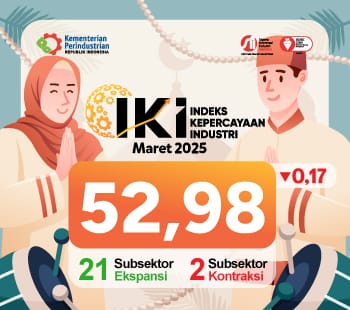Wind Gending Optimize Salt Production in Probolinggo
By : Herry Barus And Aldo Bella Putra | Tuesday, July 10 2018 - 19:30 IWST

Ilustrasi Petani Garam (Ist)
INDUSTRY.co.id - Probolinggo - Chairman of the Society of Petambak Garam (HMPG) Probolinggo, Buhar, said the phenomenon of gending wind in Probolinggo regency, East Java, helps to optimize the production of salt in the local area.
"Gending wind phenomenon is not always bad, for example in the field of salt aquaculture because with the wind is precisely the field of business was helped from the production side," he said in Probolinggo, Monday (9/7/2018).
According to him, the phenomenon of gising wind is an annual phenomenon in Probolinggo regency, namely wind that blows from south to north, or toward the sea.
"The gending wind sometimes brings excellent heat for salt production, and salt culture must be sustained by four elements: sea water as raw material, soil as a place of production, sun and wind to accelerate the crystallization process," he said.
He explained that the dry season that has arrived and plus a good wind, the process of salt production faster and this year wind gising has started to emerge since a week ago.
"A month ago, we harvested the prime of salt, but with production of about 3-4 tones per plot of land, after which the wet (wet) rainy season caused salt production to stop," he said.
Currently, he continued, the land of salt harvest again and two plots of land to produce about 10 tons of salt and it hopes there is no more rain fall in the dry season, so that the salt production of farmers can be maximized.
While Head of Probolinggo District Fishery Office Dedy Isfandi said the phenomenon of gising wind is a typical phenomenon of coastal areas in Probolinggo regency. "The wind blows from the District of Tongas to Klaseman Village, Gending District which the period of the emergence of the wind ranged from June to October," he said.
Pemkab Probolinggo target production of salt in 2018 as much as 20,000 tons and the number is increased compared to the target in 2017 of 15,000 tons. (Ant)
Read Also
Indonesian Embassy in Caracas Showcases Culture and Scholarship Opportunities…
President Jokowi Hands Over Rice Reserves Food Assistance in Kupang
President Joko 'Jokowi' Widodo has called on people across the country…
Trade Minister Reviews Bapok Prices in Pasar Baru, Gresik, East Java
President Jokowi: Bali’s Mangrove Rehabilitation Model to Become…
Today's Industry

Rabu, 09 Juli 2025 - 08:55 WIB
Indonesia's First Harman Professional Experience Center Opens in Jakarta
PT Inti Megah Swara (IMS Indonesia) announces the grand opening of the country's first Harman Professional Experience Center, located at Desound Melawai, South Jakarta.

Senin, 09 Juni 2025 - 14:22 WIB
Savyavasa and Permata Bank Launch Exclusive Foreign Mortgage Program
Savyavasa, a luxury residential development by Swire Properties and JSI Group under PT Jantra Swarna Dipta, in collaboration with Permata Bank, presents a new solution for foreign nationals…

Rabu, 21 Mei 2025 - 10:09 WIB
Indonesia, Thailand Sign MoU on Health Sector, Focusing on Global Capacity, Collaboration
As a part of President Prabowo Subianto’s official visit to Thailand, both countries signed a Memorandum of Understanding (MoU) on health sector, in an effort to strengthen bilateral cooperation…

Rabu, 21 Mei 2025 - 10:06 WIB
Indonesia, Thailand Deepen Cooperation on Security, Trade, and Regional Stability
resident Prabowo Subianto has reaffirmed Indonesia’s strong commitment to deepening bilateral relations with Thailand during the meeting with Thailand’s Prime Minister Paetongtarn Shinawatra…

Selasa, 20 Mei 2025 - 12:44 WIB
Boediman Widjaja's Technology Ready to be Adopted in Jababeka Industrial Estate (KIJA)
In an exclusive seminar entitled "A Great Step: Boediman Widjaja Story - Going from Indonesia, Thriving in Singapore" held at the President Lounge, Menara Batavia, Boediman Widjaja, Founder…

















News Comment